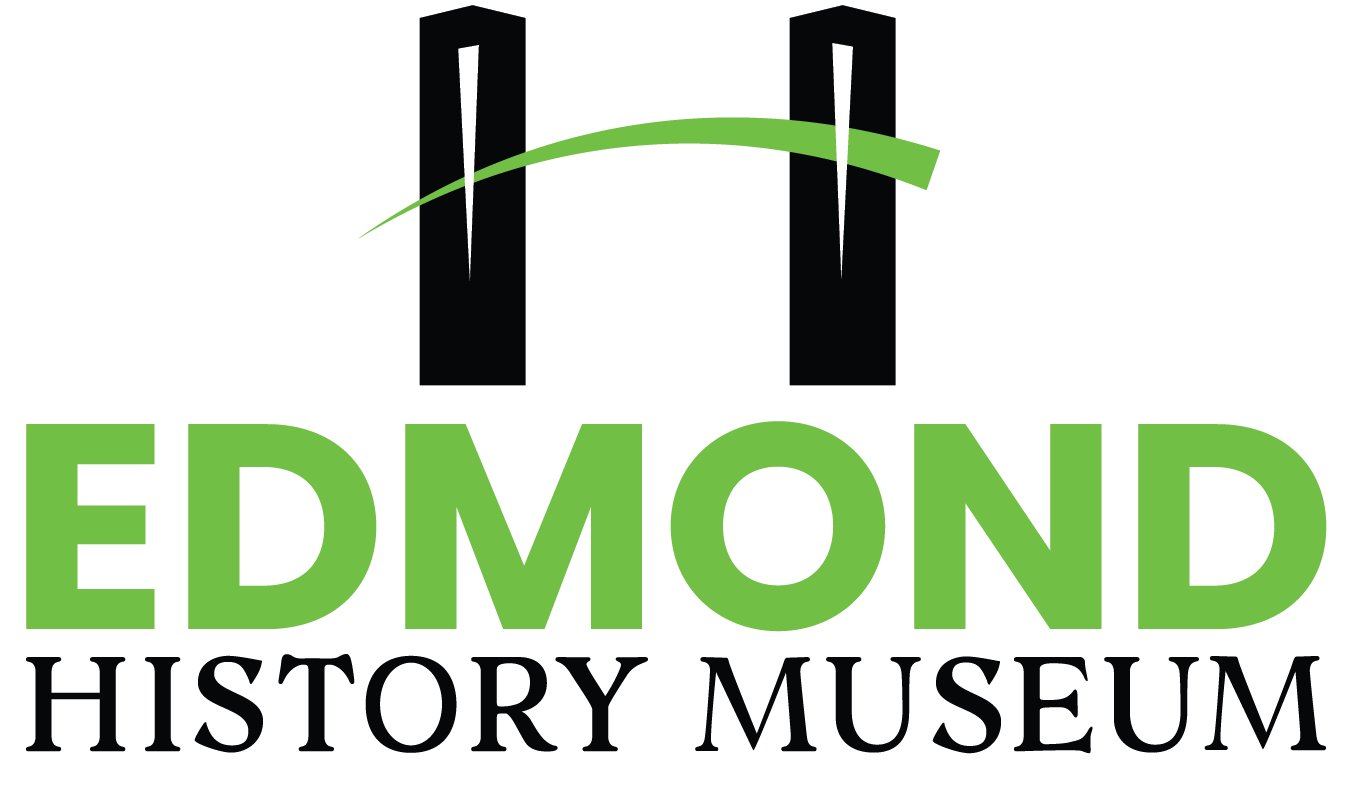The Moral Twenties
The year 1920 launched a decade of Puritan restriction of pool halls, beer drinking, dancing and even roller skating in Edmond; a decade tinged heavily with racial overtones and public influence, if not intimidation, by the Ku Klux Klan. While other parts of the nation were indulging in the excesses of Speak-Easies, bathtub gin and gangsterism, Edmond was exercising the restraints of fervent piety.
Edmond, Oklahoma began the 1920’s with two reminders of its pioneer past: Mr. And Mrs. John Steen, Edmond’s original citizens, returned from their retirement home in Arkansas City for a visit; and long-time city clerk Colonel H. H. Moose died in an Oklahoma City hospital at the age of 82. With the great war to end all wars behind them, Edmondites attended Central State Normal College in February to hear former U.S. President William H. Taft speak in favor of the League of Nations.

In 1920, John and Cordelia Steen visited Edmond and pictures were taken of them by the old pump house where they had lived as the first residents of Edmond 33 years before. The Steens were interviewed by Stella Barton Fordice. Fordice wrote the first history book of Edmond as her master’s thesis at CSC entitled: “The History of Edmond” in 1927.
The city itself made modest civic improvements during the 1920’s. Street lights that were then three lights to a post, were installed on Broadway between Main and Second. In July 1921, the Chamber of Commerce completed a large campground at the east end of Second Street for tourists passing through town. The park provided shade, ovens, wood, benches and water fountains. During the same summer Edmond was granted a “Better Cities Contest” top award, and the achievement was celebrated with a mile long parade featuring floats and decorated cars and with folk dancing in the streets.
Also in the 1920’s
- One of the local newspapers proudly proclaimed that the town had been chosen because it had “no foreign element, no colored population, no skating rink, no vaudeville, no epidemic, no typhoid” and pointed to the town’s five flourishing Protestant churches.
- Racial violence had flared at nearby Arcadia during August 1920 when a raid on the home of a black farmer resulted in a shoot-out, killing the black farmer, a government agent and a deputy. The farmer’s 19 year old son was taken prisoner and later lynched by a mob of 10 men three miles east of Arcadia.
- In 1922, Marchers and Klansmen held a demonstration from Stephenson Park to Broadway to the CSC campus. The Marchers carried signs that read: “Bootleggers Beware” among other scornful messages.
- In February 1923, Kelly Road from Edmond to Oklahoma City was paved.
- February 1924, Edmond voters approved a bond issue of $83,000 for a new high school building.
- In the mid-1920s a golf club was organized and a private course with sand greens was laid out on “Reynolds Pasture” south of town.
- The Women’s Federated Clubs of Edmond headed by Mrs. I.W. Rodkey and Mrs. Brissey raised money for the improvement of Mitch Park, located a the later site of Edmond’s main Post Office.
- Rodkey’s Flour Mill was Edmond’s Main Industry.
- In September of 1920, the 11:20 am southbound train was held up by six masked men just three miles south of Edmond and the culprits made their escape on horseback!
- Harry W. Clegern donated land for a new Edmond elementary school.
- Many Edmond Niners and Pioneers passed away in the 1920s, including Anton Classen, developer and civic leader.
- Famous Outlaw and Bank Robber Bill Doolin was captured by Deputy U.S. Marshal Bill Tilghman while he read the newspaper in a barbershop in Eureka Springs, Arkansas. Tilghman brought Doolin to Guthrie, Oklahoma. Many Central State College students took the train to Guthrie just to have their look at the famous badman of the West while he was jailed there. Doolin later made his escape, and rumors floated about Edmond that either the Doolin or Dalton gang had burned the courthouse at Stillwater.
from: Edmond, The First Century, by Stanley Hoig, 1987.
